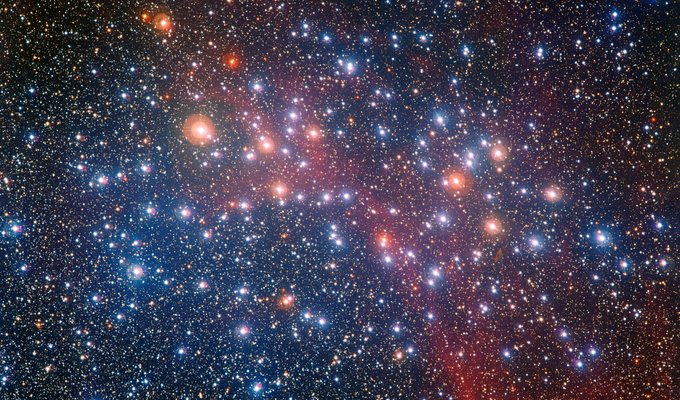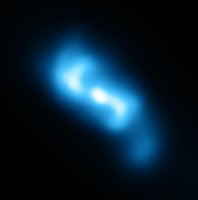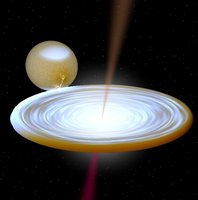In our Galaxy, you can tell how old a star cluster is based on where it’s found. Older clusters are normally found further from the centre of the galaxy than younger clusters.

The darker the observing site, the brighter the night sky.
This amazing picture was taken by a telescope in one of the most remote regions on Earth, the Atacama Desert, far from any towns or cities. It shows the bright stars of the Wishing Well Cluster, which earned its name because of the many stars that resemble silver coins sparkling at the bottom of a wishing well.
In star clusters like this one, all the stars are born around the same time, from the same cloud of gas. All the stars in this cluster, for example, are around 300 million years old.
The Wishing Well Cluster has a rich mix of around 400 red and blue stars. The colour of these stars tells us about how massive they are.
More massive stars burn hotter and brighter and use up their fuel much quicker than their smaller siblings. Because of this we can tell that the redder stars in this picture are more massive. They’re all now in the last phase of their evolution — the red giant phase. The bluer, less massive stars are still in an earlier part of their lives.
The most massive stars in the cluster aren’t visible in this picture. They have already raced through their short, feisty and exploded as powerful supernovae long ago.





















